One of the most important considerations when purchasing a new home is the condition of the roof. The roof is a major part of the exterior envelope that protects your home from the weather and outdoor environment.
A home inspector observing the roof from the eaves
When performing a home inspection, our home inspectors do their best to assess the condition of the roof. Our home inspection Standards of Practice (SOP) states that the home inspector shall inspect from the ground or eaves. That’s right: ground or eaves. We are not required to walk the roof. Your home inspector may decide to walk the roof, but only if it is safe to do so. We want to have the best look at the roof, but sometimes ice, rain, snow, high winds, height, and roof pitch keep us off the roof.
The cost of a roof replacement can be high, but the investment in a solid roof is well worth protecting your home. Roof leaks or a roof that is at or beyond its serviceable life may have leaks that can lead to water damage such as rot and mold.
The following is a general list of red flags that your home inspector will look for when performing a roof inspection. Any issues will be documented in your home inspection report.
Record of roof replacement
If there is a copy of the property disclosures available, your home inspector will review the document to see if there is a date listed when the roof was replaced. If not, we make our best attempt to determine an approximate age. Roofs over 20 years old should be monitored closely and replaced if they are nearing the end of their life span.
Excessive moss and tree branches
On areas of your roof where the “sun doesn’t shine,” there is potential for moss growth. Moss can damage your roof and result in failure if it undermines the surface. Excessive moss should be professionally removed or treated to keep it from damaging your roof.
Moss on a roofing surface
Tree branches should never come into contact with your roof surface. The wind will cause the branches to rub on the roof and wear away the granules on the shingles, causing premature failure of the roof surface.
Missing or curling shingles
As shingles age, they can start to become brittle. The aggregate surface starts to deteriorate, and the substrate of the shingles is more exposed to sunlight. This can cause the edges to curl up, making your roof susceptible to wind damage. High winds can either snap off a shingle tab or whole sections of your roof.
An extreme case of curled and patched shingles
Previous roof repairs
If your home inspector sees prior patching or shingles that are replaced on a roof, this could mean that there were issues with installation, high winds, or aging of the roof surface.
Moisture damage in the attic
A leak in a roofing system may lead to rot and deterioration to the structure or framing of your roofing system as well as the roof decking. These types of leaks may never get bad enough to present themselves on the ceiling, but they can lead to some major damage if undetected.
Dark spots or paint patching
Moisture stains and areas on the ceiling that look like they’ve been painted over can be signs of past or present leaking. These types of leaks can indicate potential problems with water damage or mold in the materials on the other side of that paint.
Summary
A solid roof is important to protect your home from the elements. Whether part of a home inspection or not, homeowners should take the time to look at their roofs at least seasonally. If any of these red flags present themselves, resolve them immediately.
At HomePro Inspections, our home inspectors are trained to inspect the roofing system of your home. Any issues are documented in your home inspection report and recommended for resolution by a qualified professional.
Visit our website to learn more or to schedule your home inspection in the Rochester, Owatonna, and Faribault, MN areas. You can contact us today at (507) 202-8942 or utilize our online “Schedule Now” feature to set up an appointment.



